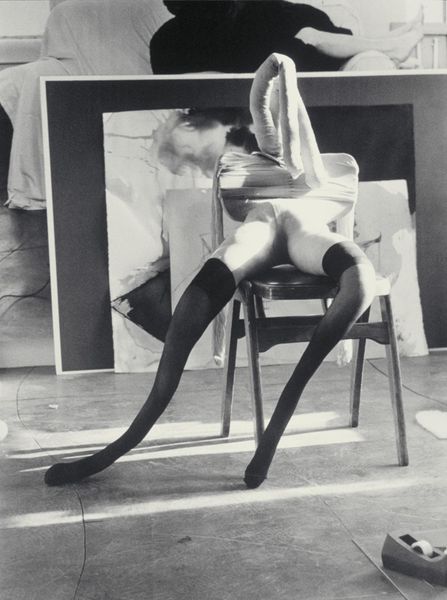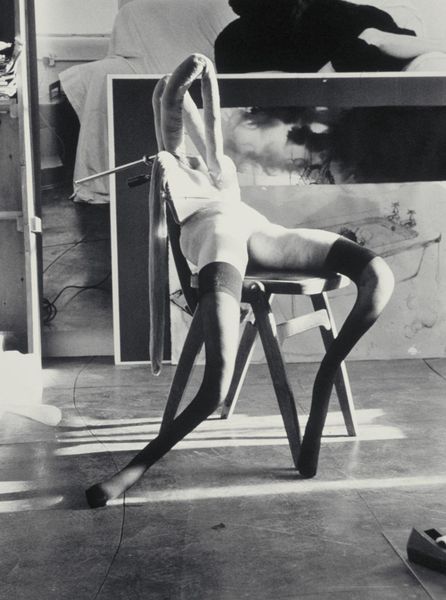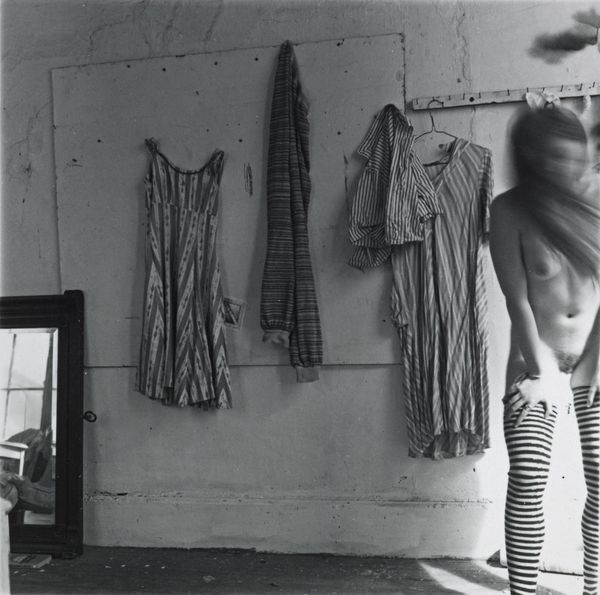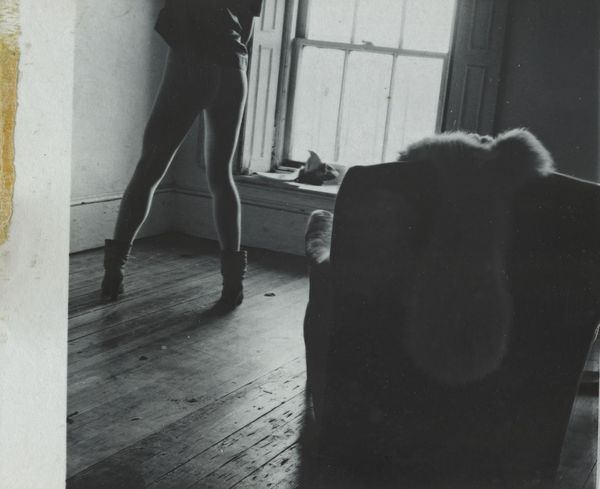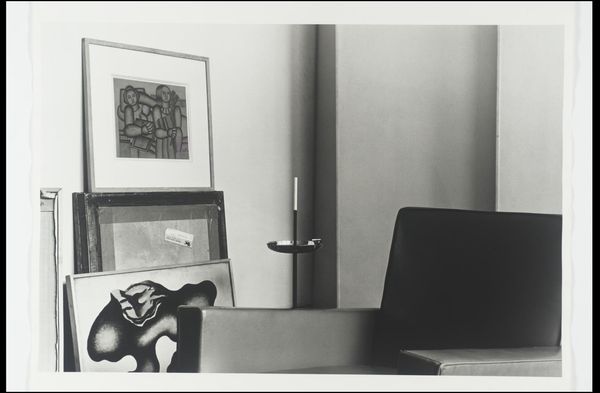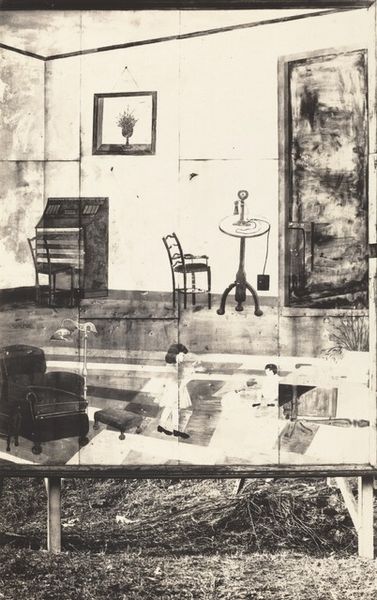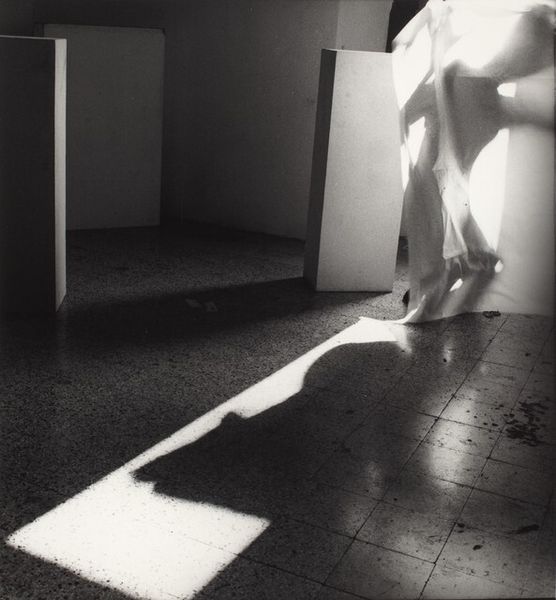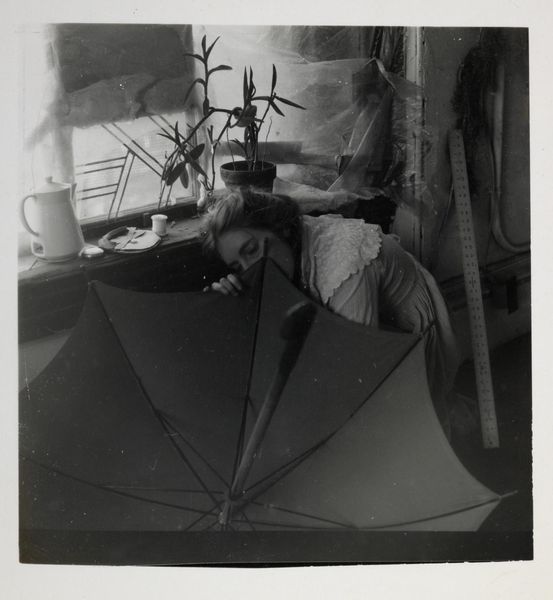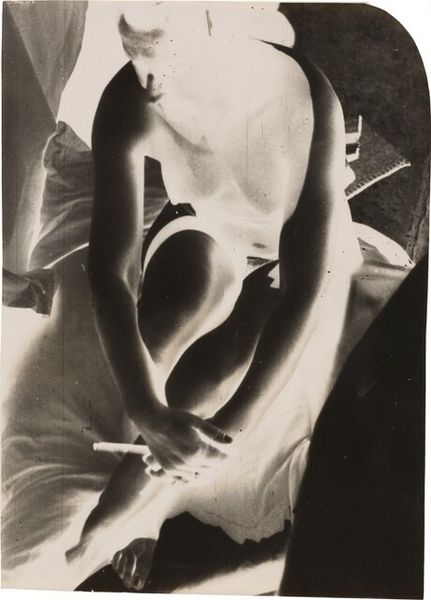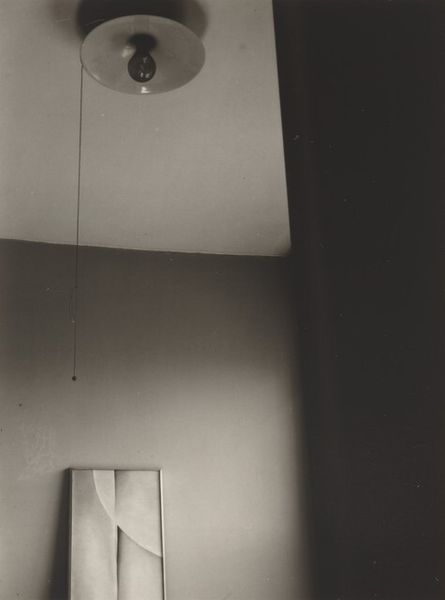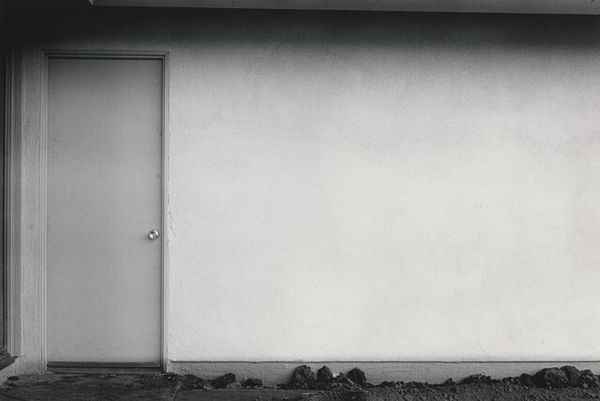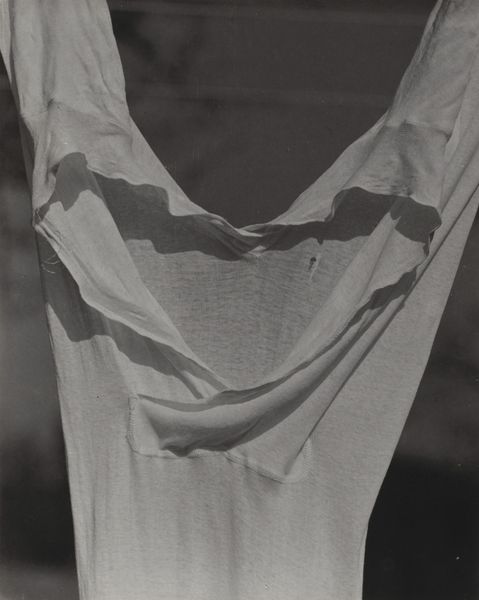
Dimensions: image: 1220 x 914 mm
Copyright: © Sarah Lucas | CC-BY-NC-ND 4.0 DEED, Photo: Tate
Editor: This is Sarah Lucas’s "Black and White Bunny #3" from the Tate Collections. The stark black and white tones give it a bluntness. What do you see in this piece, especially in terms of its composition? Curator: The stark contrasts and the almost brutal arrangement of forms are very striking. Note how the artist uses the hosiery to define shape, volume, and texture. Editor: So, it's less about the subject and more about how the materials are used? Curator: Precisely. It’s the interplay of these base materials, their arrangement, and the stark black-and-white medium that command our attention, rather than any narrative the figure might suggest. Did you notice the way the line created by the chair's leg is mimicked by the stockinged limb of the "bunny"? Editor: Now that you mention it, the formal echoes within the composition are quite pronounced! Curator: Indeed. It exemplifies how Lucas manipulates form to challenge traditional notions of representation. I find that fascinating.
Comments
tate 8 months ago
⋮
http://www.tate.org.uk/art/artworks/lucas-black-and-white-bunny-3-p78229
Join the conversation
Join millions of artists and users on Artera today and experience the ultimate creative platform.
tate 8 months ago
⋮
Lucas exhibited these three black and white photographs as part of her installation at Sadie Coles HQ, London in 1997, entitled Bunny Gets Snookered (see Tate T07437). A series of eight 'bunny girls' made from stuffed tights, each wearing stockings the eight colours of snooker balls, sat on a variety of office chairs arranged around and on top of a snooker table in the gallery space. The photographs were hung on the adjacent wall, suggesting further possible readings of the sculptures. The installation as a whole provided a typical Lucas-style joking subversion of (male) objectification of the female body, as it appears in the tradition of surrealism, by rendering that object of desire undesirable and ridiculous. However, the photographs, with their formal beauty, hint at issues both more transcendent and more disturbing. The bunnies here (the three photographs seem to be of the same bunny) sit in the characteristic Lucas splay-legged pose, illuminated by sunlight coming in through a window which renders them beautiful rather than merely abject. Distanced from the limp and veiny physicality of the sculptures through the medium of black and white photography, the form Lucas has created by stuffing a pair of tights becomes more aesthetically attractive and subtly suggestive. The slapstick humour of the sculptures has been overlaid by a dreamy quality of light and almost-poetic atmosphere, with violation and abuse a dark undercurrent rather than an obvious theme. Lucas has increasingly combined objects and elements from her sculptures with photographic representations of herself (and sometimes parts of an anonymous male body). Here the presence of the cloaked human figure (of indeterminate gender) in the background of the picture, who reveals only a portion of leg, dislocates the viewer's imaginary connection of the sculpture with the human. By juxtaposing a real body with her sculpture which mimics a body, Lucas opens further ambiguities in the dynamics of (sexual) objectification and desire. Further reading:Lynn Barber, 'Drag Queen', Observer Magazine, London, 30 January 2000, pp.10-16Art from the UK, Sammlung Goetz, Munich 1997, pp.130-6Sarah Lucas, exhibition catalogue, Museum Boymans-van Beuningen, Rotterdam 1996 Elizabeth ManchesterAugust 2000
